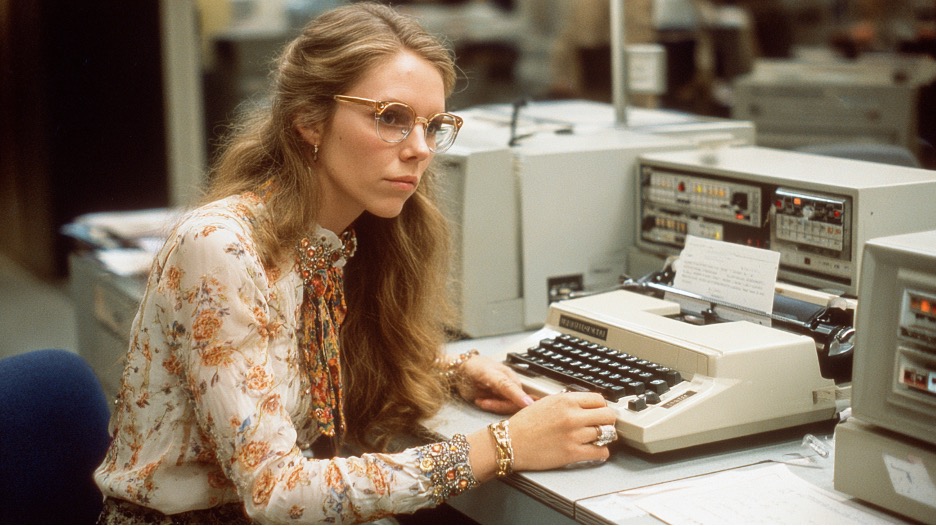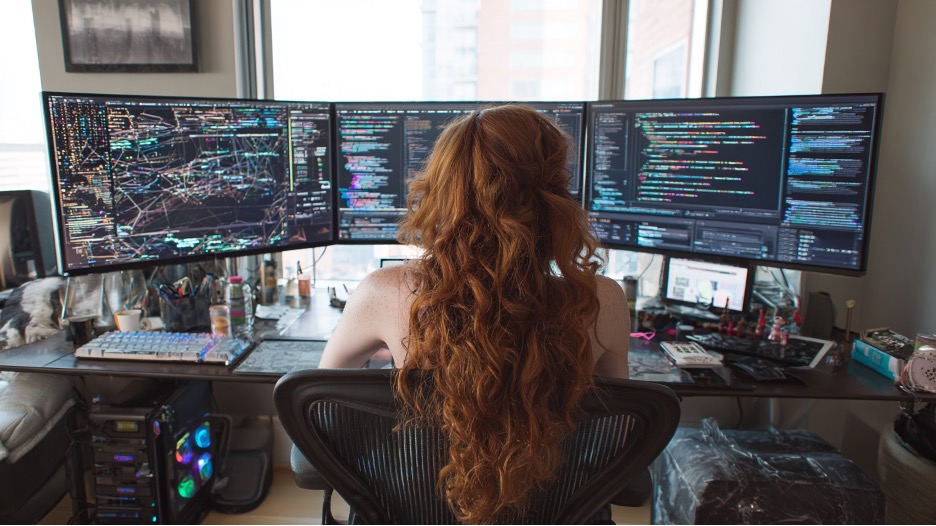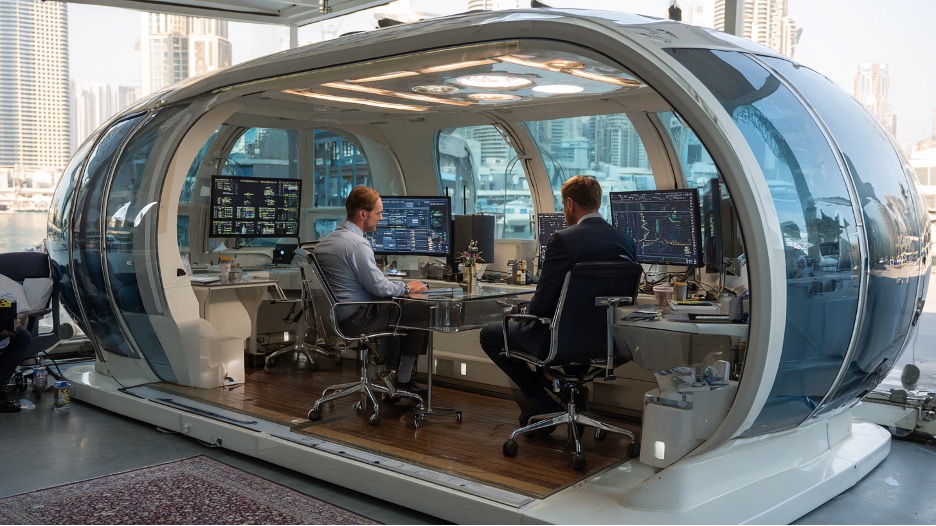The History of the Office: From Medieval Scriptoriums to Today’s Hybrid Hubs
A Journey Through Centuries of Workplace Transformation
Medieval monks used medieval scriptoriums comprised of a desk, chair, and storage shelves, very similar to today’s basic office setup.
The Ancient Origins: Where Work Began
The concept of the “office” is far older than most realize. The origins of the modern office lie with large-scale organizations such as governments, trading companies and religious orders that required written records or documentation. Medieval monks, for example, worked in quiet spaces designed specifically for sedentary activities such as copying and studying manuscripts. These early “workstations” in medieval scriptoriums comprised a desk, chair, and storage shelves—remarkably similar to today’s basic office setup.
Originating in Italy, the counting house was a central feature of commerce in the high Middle Ages and afterward. A counting house was a typing room, cash office, accounting hall and goods depot all in one. These Renaissance-era business centers were where all writing, calculating, cash collecting, accounting and correspondence were handled. The merchant’s desk became the most important item of furniture in the counting-house.
The term “office” itself traces back to Roman times, when “officium” described the administrative structure supporting magistrates. But it wasn’t until the 18th century that buildings with dedicated office spaces were constructed to meet the needs of expanding empires and global commerce.

The British Empire required office space to handle paperwork and records related to office administration.
The Industrial Revolution: Birth of the Modern Office
The process started in London when the growth of the British Empire required office administration. Two buildings were designed to handle paperwork and records related to office administration, the Navy, and the increased commerce. These included the Admiralty Office, a building for the Royal Navy, and a building for the East India Company.
The rise of industrialism, urbanization, and world trade in the 18th and 19th centuries brought about a sea change in the development of the workplace. Factories, mills, railroads, banking, oil, shipping, and insurance companies needed an increasing amount of space to house operations, executive offices, and clerks.
The late 19th century introduced scientific management principles that would define office culture for decades. Taylorism, a scientific method of production management used for maximizing the efficiency of machines and workers espoused by industrial engineer Frederick Taylor, was universally applied to office layouts. Linear rows of desks were packed tightly to maximize efficiency and overseen by management in private offices.

The typewriter revolutionized office work in the late 1800s—accelerating productivity, replacing handwritten ledgers, and opening the door for women to enter the professional workforce in unprecedented numbers.
The Typewriter Revolution: Technology Changes Everything
The invention of the typewriter in the 1860s fundamentally transformed office work. Until refillable fountain pens were introduced in 1884, handwriting was a cumbersome process accomplished with pens dipped in ink. The ease and speed of communication on paper increased dramatically when typewriters became available in the late 1800s.
For business, though, it was an intoxicating improvement and uptake was rapid, with typewriters being ubiquitous by 1900 and produced by a wide variety of manufacturers. They transformed not only the output but the staff too, enabling rapid growth in the number of women working in offices.
The typewriter didn’t just change how documents were created—it revolutionized who created them. The typewriter, for better and for worse, has changed the women’s workplace since its inception, and though the typewriter has been swapped out for desktops and laptops, its legacy continues to define the world of work for women to this day. Typewritten documents, in the business world, began to supplant the old handwritten ledgers toward the end of the 19th century.
Women entered the workforce en masse as typists, with 94.9% of stenographers and typists were unmarried women according to the 1900 census. This created new opportunities but also established gender-segregated roles that would persist for decades.
The Skyscraper Era: Reaching for the Sky
At the end of the 19th century, the invention of the light bulb, typewriter, dictaphone, and telephone changed how the workplace functioned. The first steel-framed office towers with elevators were constructed, providing multi-floor offices.
With the invention of iron frames in 1860 and elevators in 1870, offices began expanding upwards. Chicago’s Home Insurance Building is often considered the first ‘skyscraper’. Multi-storeyed buildings quickly replaced the old-fashioned counting houses.
The 1930s saw the completion of iconic structures like the Empire State Building, while architects like Le Corbusier began reimagining office design with innovations like glass exteriors. This development necessitated new technologies: offices heated up to unbearable temperatures during summer. Carrier Corporation tackled the problem by introducing the first air-conditioning. Soon, fluorescent light bulbs entered the office, allowing spaces far away from windows to be properly lighted.
The Computer Revolution: Digital Transformation
The 1980s marked another seismic shift in office design and function. In the 1980s, the computer started to gain popularity in the workplace, which marked the beginning of a new technological era, changing the workplace forever.
The IBM 5150 PC, released in August 1981, is widely considered ground zero of the personal computing revolution. Business productivity soared thanks to specialized programs finally making it simple for employees to analyze data, create documents and manage projects right from their own office desks on PCs.
Jobs wanted to revolutionize the workplace by making computers more affordable and easier to use. In addition to phasing out typewriters, Apple also eliminated the job title “secretary” at the company, replacing it with “area associate” — a term the company felt better represented the wider range of job duties employees could perform with a personal computer.
The computer revolution had profound implications beyond just technology. To a substantial extent, the computer revolution explains the increasing wage gap that started to develop in the 1980s between those with a college education and those with a high-school education or less.
The COVID-19 Watershed: Everything Changes
March 2020 represented the most dramatic transformation in office culture since the Industrial Revolution. The COVID-19 pandemic disrupted labor markets globally during 2020. The short-term consequences were sudden and often severe: Millions of people were furloughed or lost jobs, and others rapidly adjusted to working from home as offices closed.
A recent study highlighted that, before COVID-19, 2.9% of the total US workforce and around 2% of that in Europe engaged in emergency remote working. Prior to the COVID-19 crisis, most workers had limited familiarity with remote working.
The pandemic forced an unprecedented experiment in remote work. Although 6.5 percent of workers in the private business sector worked primarily from home in 2019, the pandemic was the start of a massive experiment in full-time remote work for most workers and firms.
What We Lost and What We Gained
What We Lost: The pandemic fundamentally altered workplace dynamics, with significant losses in traditional office culture. After years of improvement, employee engagement took a turn for the worse in 2021. By 2024, the percentage of employees who are engaged at work fell to a 10-year low. In 2019, 55% of employees fully knew what was expected of them. This number plummeted when the pandemic hit and fell to a new record low in 2024 (44%).
Some companies are already planning to shift to flexible workspaces after positive experiences with remote work during the pandemic, a move that will reduce the overall space they need and bring fewer workers into offices each day. A survey of 278 executives by McKinsey in August 2020 found that on average, they planned to reduce office space by 30 percent.
What We Gained: Despite challenges, the shift also brought measurable benefits. Total factor productivity growth over the 2019–22 period is positively associated with the rise in the percentage of remote workers across 61 industries in the private business sector, even after accounting for pre-pandemic trends in productivity.
Today, more workers say they are doing this by choice rather than necessity. Among those who have a workplace outside of their home, 61% now say they are choosing not to go into their workplace, while 38% say they’re working from home because their workplace is closed or unavailable to them.

Blending work and home life, the modern residence is being reimagined with multifunctional spaces that seamlessly integrate offices into everyday living.
The Home Office: Residential Architecture Reimagined
The shift to remote work has fundamentally transformed not just office design, but residential architecture itself. As homes continue to evolve, so does the need for spaces that serve multiple purposes. One of the key 2025 home office trends is the creation of multifunctional spaces. Your home office can double as a guest room, a library, or even a workout area.
Today’s home designs increasingly center around the reality that the house must function as both sanctuary and workplace. The project was designed for a designer couple who wanted their workplace to be an integral part of their daily routine. Catering to the two functions, a home office is located on the ground and semi‐basement floor, whereas the residential area is placed on the level above it.
The Rise of Dual Home Offices
Perhaps the most telling shift in residential design is the emergence of homes built around multiple work spaces. The traditional “3 bedroom, 2 bath” model is increasingly giving way to “3 bedroom, 2 bath, 2 offices” as couples both work remotely and need dedicated, separate work environments.
Flexible workstations are a key component of the 2025 home office trends, featuring modular furniture that can be easily rearranged. Whether you need a standing desk for focused work, a cozy corner for brainstorming, or a large table for projects, adaptability is essential.
Modern home offices incorporate sophisticated technology and design principles that rival corporate workspaces. Smart technology is set to redefine home office design trends in 2025. Start your home office inspiration with a desk that automatically adjusts to your preferred height or lighting that shifts color temperature based on the time of day.
Wellness-Centered Design
The integration of wellness features into home office design reflects our deeper understanding of work-life balance. One of the standout home office trends in 2025 is the inclusion of wellness zones. These areas are dedicated to activities that promote physical and mental well-being, such as yoga, meditation, or simply taking a break with a cup of tea.
One of the most exciting home office trends for 2025 is the continual rise of biophilic design. This time, it incorporates natural elements—like plants, sunlight, and organic materials—into your workspace design. This residential transformation represents a complete reimagining of domestic space, where the boundaries between living and working have become permanently blurred, requiring architects and designers to create homes that serve as both productive workplaces and restorative living environments.

The office of 2025 blends physical and virtual worlds, with hybrid models, decentralized spaces, and immersive tech redefining how and where we work.
The Office of the Future: Hybrid and Beyond
Looking ahead, the office isn’t disappearing—it’s evolving. One of the most significant remote work trends we have been tracking in our research for the Demand for Skilled Talent report is the growth in hybrid job postings from 9% in Q1 2023 to nearly a quarter (24%) of new jobs at the start of 2025.
In early 2025, 61% of full-time employees were completely on-site, while 13% were fully remote, and 26% worked a hybrid arrangement. This hybrid model appears to be stabilizing as the new normal.
The Reimagined Office Space: Office spaces in 2025 will be reimagined to reflect new working realities brought about by shifts in employee expectations and the widespread adoption of hybrid work models. Instead, companies are prioritizing designs that foster creativity, team interaction, and personal comfort.
The era of centralized headquarters is giving way to decentralized office spaces and remote work hubs designed for distributed teams. By 2025, more companies will adopt this flexible approach, creating smaller, strategically located offices or shared workspaces that cater specifically to remote employees.
Technology as the Great Enabler: Future offices will be defined by their technology infrastructure. Collaboration has gone virtual, with many offices designed to support in-person workers and remote employees. Meeting rooms have immersive video conferencing setups with speakers, cameras, and smart screens to close the gap between geographically dispersed colleagues.
Will We Still Have Offices? The Verdict
The office isn’t dying—it’s being reborn. 98% of remote workers would work remotely for the rest of their careers and recommend remote work to others. 66% of respondents worldwide believe that working from home should be a legal right. Yet 47% of employees who work remotely at least some of the time say they’d be unlikely to stay at their job if they were called back to their offices full time.
The future office will serve different purposes than it did in the past. Rather than being a place where all work happens, it will become a destination for collaboration, creativity, mentorship, and company culture. The office is an important factor in communicating the necessary cues of leadership, not to mention enabling collaboration and communication.
The Bottom Line: COVID-19 was indeed a major turning point—perhaps the most significant workplace transformation since the Industrial Revolution. We lost some elements of traditional office culture, including spontaneous collaboration and clear hierarchical structures. But we gained unprecedented flexibility, global talent access, and new models of productivity.
The office of the future will be smaller, smarter, and more purposeful. It will coexist with home offices, coworking spaces, and digital collaboration platforms in an ecosystem designed around human needs rather than industrial efficiency. As we look ahead, one thing is certain: the centuries-long evolution of the office continues, shaped by technology, social change, and our ever-adapting understanding of how and where great work gets done.
The office may have started in medieval monasteries, but its future lies in hybrid flexibility—a fitting evolution for a concept that has always adapted to serve the changing needs of human enterprise.

